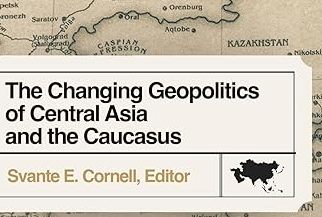Split Among North Caucasian Fighters in Syria
By Emil Souleimanov (07/02/2014 issue of the Turkey Analyst)
News has recently resurfaced in media outlets across the world referring to Omar al-Shishani, an ethnic Chechen leader of the north-Syrian sector of the Islamic State of Iraq and Syria (ISIS), as one of the presently most influential and reputed jihadist leaders. Indeed, since around 2012, when fighters of North Caucasian origin appeared at the forefront of international jihadists engaged in the Syrian civil war, they have become a significant component of the anti-Assad force. They have grouped into various, increasingly divergent, mujahideen armies and their prospective return to the North Caucasus holds significant security implications.
Afghanistan's Post-Taliban Telecommunications Revolution Will Include Satellite Access
By John. C.K. Daly (07/02/2014 issue of the CACI Analyst)
The turmoil that has devastated Afghanistan since the 1979 Soviet invasion and subsequent 2001 Western campaign against the ruling Taliban has left the country in a fragile political state, but its telecommunications sector has thrived. The Afghan government is leasing a telecommunications satellite, which will provide nationwide coverage. Currently all communications in Afghanistan are connected through other countries’ satellites. In 2001 when the Western campaign against the Taliban began, the country had a primordial land-based copper wire telephone network.
Iran and Afghanistan: More of the Same
By Richard Weitz (07/02/2014 issue of the CACI Analyst)
Iran’s growing role in Iraq to counter the Sunni militants there has attracted increasing attention in recent weeks, but Tehran looks likely to assume a more prominent role in Afghanistan as well. Iranians see challenges as well as opportunities in both countries, where actors hostile to Iranian interests are active. The civil strife in Iraq and Afghanistan easily spills over into Iran, and their governments turn primarily to Washington for military support despite their growing ties with Tehran. In Afghanistan, Iran has pursued a complex multi-layer strategy designed to pursue its diverse and competing objectives.
Repercussions of Ukrainian Separatist Referendums for the North Caucasus
By Huseyn Aliyev (06/18/2014 issue of the CACI Analyst)
Russia’s annexation of Crimea in March 2014 and the ensuing series of separatist referendums in Eastern Ukraine has led to numerous debates in the former Soviet Union, and beyond, about the repercussions of the Ukrainian events for the rest of the region. Although the primary focus has so far been on the de-facto independent separatist regions, such as Moldova’s Transnistria, Azerbaijan’s Nagorno-Karabakh and Georgia’s South Ossetia and Abkhazia, analysts have also started drawing parallels between the ongoing developments in Ukraine and the deeply-rooted separatist aspirations in Russia’s North Caucasus region.



 Silk Road Paper S. Frederick Starr,
Silk Road Paper S. Frederick Starr,  Book Svante E. Cornell, ed., "
Book Svante E. Cornell, ed., "